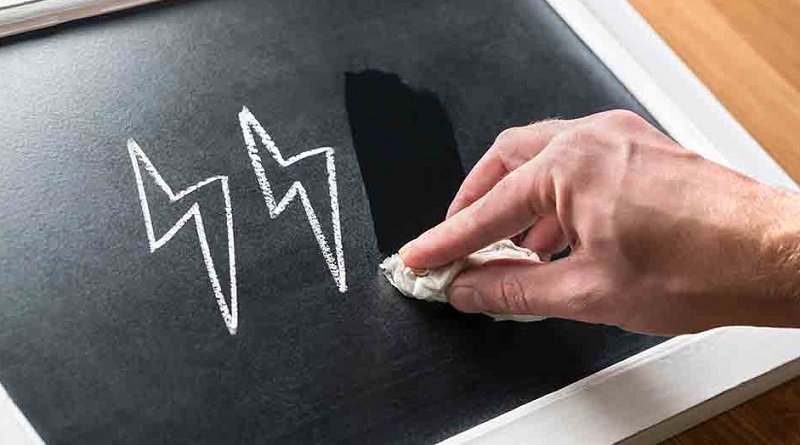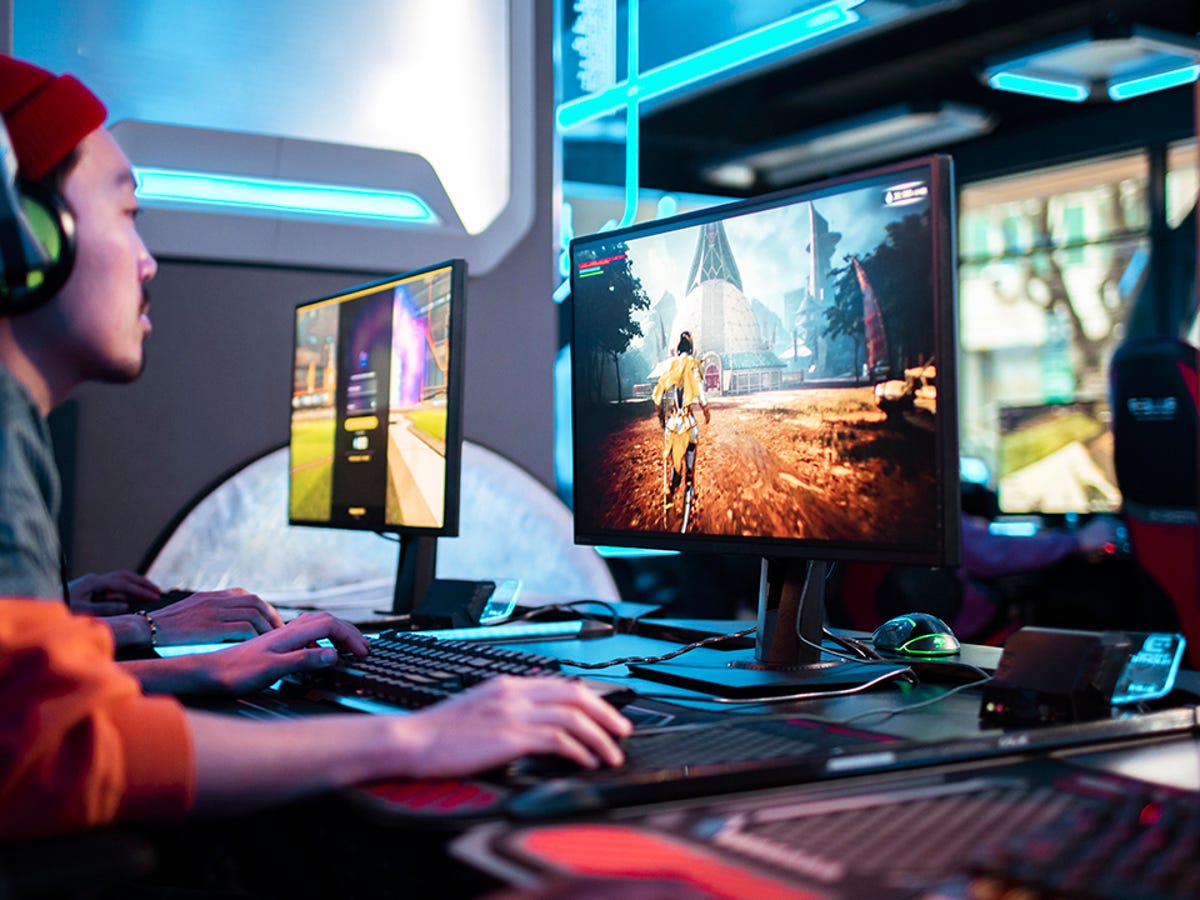Millions of people across the globe have made gaming their preferred recreational activity. The fast technological development has resulted in remarkable improvements in gaming PC performance capabilities. Advanced technology has led to power consumption and environmental issues that serve as concerns about them. We will analyze electricity usage while discussing typical power requirements for gaming PCs.
Let’s get started!
Types of Gaming PC and Their Electricity Usage
A gaming PC’s electric consumption depends on three main variables, which combine hardware equipment quality with power system efficiency and playing duration. These are the common gaming PC types, along with their corresponding electricity consumption details.
1. Entry-Level Gaming PC
Most entry-level gaming PCs contain mid-level hardware that runs standard games at normal settings. These systems need electricity ranging between 300 and 500 watts when performing tasks. Power usage ranges according to the components installed in the system.
2. Mid-Range Gaming PC
Mid-range gaming PCs offer a good balance between performance and affordability. They usually feature more powerful hardware components, such as mid-range graphics cards and processors. The electricity usage of a mid-range gaming PC can range from 400 to 600 watts under load, depending on the specific configuration.
3. High-End Gaming PC
High-end gaming PCs are built for maximum performance and can handle demanding games at high settings. These systems typically feature top-of-the-line components, such as high-end graphics cards and processors, which consume more power. The electricity usage of a high-end gaming PC can range from 500 watts to well over 1000 watts under heavy load, depending on the components used.
Electricity Consumption of a Gaming PC
Image credit: pcworld.com
To calculate the electricity consumption of a gaming PC, you need to consider several factors. The power consumption of a PC depends on its components, usage patterns, and power settings. Here’s a general approach to estimating the electricity consumption:
- Identify the components: Determine the power consumption of individual components in your gaming PC, including the CPU, GPU, motherboard, RAM, storage devices (HDD/SSD), fans, and any additional peripherals (such as monitors, speakers, etc.). You can find the power consumption values in the specifications provided by the manufacturer or online resources.
- Calculate the PC’s power consumption: Add up the power consumption of all the components. Typically, power consumption values are given in watts (W). For example, if the CPU consumes 80W, GPU consumes 150W, and other components consume 50W, the total power consumption would be 80W + 150W + 50W = 280W.
- Determine average usage: Estimate how many hours you use your gaming PC daily. For instance, let’s assume you use it for 4 hours daily.
- Calculate daily energy consumption: Multiply the total power consumption (from Step 2) by the average daily usage (from Step 3). Using the previous example, the daily energy consumption would be 280W * 4 hours = 1120 watt-hours (Wh) or 1.12 kilowatt-hours (kWh).
- Calculate monthly or yearly consumption: Multiply the daily energy consumption (from step 4) by the number of days in a month or a year, depending on the period you want to calculate. For example, if you want to calculate the monthly consumption, multiply the daily consumption by 30 (the average number of days in a month). In this case, the monthly consumption would be 1.12 kWh * 30 days = 33.6 kWh.
Calculating the Cost of Running a Gaming PC
Image credit: medcpu.com
Gaming PC operating expenses depend on various elements like equipment purchase price along with energy usage and supplementary charges for internet services and software access. To determine the average electricity costs of a gaming PC, follow these steps:
- Initial Hardware Cost: Determine the cost of the gaming PC itself, including the components such as the processor, graphics card, memory, storage, and peripherals like the monitor, keyboard, and an fps gaming mouse. This cost is typically a one-time expense.
- Electricity Consumption: Each component provides its power rating in its specifications section, which helps calculate electricity usage.
- Electricity Cost: This information can be found on your electricity bill or by contacting your utility provider. To determine the monthly electricity cost, multiply the number of kWh you use in a month by the cost rate per kilowatt-hour.
- Additional Expenses: Consider any additional expenses related to your gaming PC, such as internet connectivity fees, software subscriptions (e.g., online gaming services), and maintenance costs. These costs can vary depending on your usage and preferences.
- Total Cost: Add up the initial hardware, monthly electricity, and additional expenses to get the total cost of running your gaming PC.
Factors Influencing How Much Electricity a Gaming PC Uses
Several factors can influence the amount of electricity a gaming PC uses. Here are some key factors to consider:
1. PC Components
Image credit: cnet.com
Gaming PC power consumption levels are heavily determined by what components you choose for your build. Multiple hardware components, which include high-performance graphics cards, power-hungry processors, and peripherals such as RGB lighting and several storage drives, result in increased power consumption.
2. Graphics Card (GPU)
A gaming PC consists of components, and the graphics card is its top power-consuming element. Modern GPUs which provide superior performance require progressively higher electricity levels. The power requirements for graphics cards increase proportionally to their TDP (Thermal Design Power) measurements.
3. Processor (CPU)
Power consumption from a system depends heavily on the operations of its central processing unit (CPU). CPU units possessing greater core counts, along with elevated clock speeds, usually require elevated power consumption. Today’s CPUs utilize energy-efficient mechanisms to handle unutilized system conditions and light processing states.
4. Power Supply Unit (PSU)
The efficiency and capacity of the power supply unit can impact electricity usage. A higher-rated PSU with better efficiency (such as 80 Plus Bronze, Silver, Gold, or Platinum certifications) can convert more incoming AC power into usable DC power, reducing wasted energy.
5. Gaming Settings
The graphics settings you choose in games can affect power consumption. Running games at higher resolutions, with more demanding graphical effects, or enabling features like ray tracing will put a heavier load on the GPU and increase power usage.
Image credit: wired.com
6. Overclocking
Boosting the operating speed of your CPU or GPU results in higher power usage. Power and heat generation increase when users exceed the set default values to increase clock speeds or voltages.
7. Usage Patterns
Gaming duration and session intensity determine the total electrical consumption during gameplay. The duration of gaming sessions, along with running powerful games during longer durations, corresponds to increased electricity usage.
8. Peripherals and Accessories
Gaming peripherals that function through connectivity, including keyboards, mice, photo editing monitors, and external devices, require supplementary power draw. Lighting effects and high refresh rate monitors drain more electricity than standard versions of peripherals.
9. Energy Saving Settings
The power management settings in sleep mode and hibernate mode help conserve electricity during inactive periods. Strategic adjustments of your operating system power settings, together with power plan optimization, help decrease electricity consumption.
Image credit: lifewire.com
10. Background Processes and Software
Some applications and background processes, like game launchers or software running in the background, can use system resources and contribute to increased power usage. Closing unnecessary programs can help reduce power consumption.
Tips on Reducing How Much Energy Gaming PC Use
Lowering PC power consumption results in decreased energy usage together with reduced environmental impact. These guidelines will show you how to minimize your PC power usage:
- Choose energy-efficient components: Check for energy efficiency certifications on power supplies as well as graphics cards and processors displayed by ENERGY STAR.
- Optimize power settings: When your gaming computer remains unused, you should enable features like sleep mode and hibernation for power conservation. A proper adjustment of screen timeout settings helps to save power consumption.
- Manage graphics settings: Power consumption becomes manageable when you reduce the resolution while disabling anti-aliasing features alongside decreasing shadow and texture qualities and capping the frame rate.
- Use efficient cooling solutions: Consider using more efficient cooling solutions such as liquid cooling, which can be more energy-efficient than traditional air cooling methods.
- Unplug or use power strips: Gaming PCs have several peripherals and accessories connected, such as speakers, external hard drives, or gaming controllers. When not in use, unplug these devices or use power strips with switches to easily turn them off altogether.
- Disable background processes: Use task manager or system configuration tools to turn off unnecessary startup programs and services not essential for gaming. This can help reduce energy consumption and improve system performance.
- Enable power-saving modes: Many modern games have power-saving or energy-efficient modes built into their settings. Enable these options to optimize the game’s performance while minimizing power usage.
- Regularly update drivers and software: Keeping your drivers and software up to date can improve energy efficiency by fixing bugs and optimizing performance. Graphics card drivers, in particular, often receive updates that enhance power management capabilities.
- Consider a power meter: Use a power meter to measure your gaming PC’s energy consumption. This will help you identify which components or activities use the most power, allowing you to make informed decisions about optimizing energy usage.
Frequently Asked Questions on How Much Electricity Does a Gaming PC Use
Image credit: zdnet.com
a) Do gaming computers use a lot of electricity?
Having your gaming PC powered on constantly results in both useful benefits and unfavourable consequences. Operating the device with power enables instant access to updates so startup delays disappear. The system enables automatic execution of background tasks, including downloads and backups. Long usage periods both speed up your hardware degradation and enhance your energy utilization. A sleep mode or hibernation should be activated when the device sits idle.
b) Should I leave my gaming PC on all the time?
Leaving your gaming PC on all the time has both advantages and drawbacks. Keeping it powered on ensures quick access and updates, avoiding startup delays. It allows for background tasks like downloads and backups. However, prolonged usage may accelerate hardware wear and increase energy consumption. To strike a balance, consider enabling sleep or hibernation modes during inactivity.
c) Does a gaming PC use more electricity than a fridge?
A gaming PC and a fridge have significantly different power consumption levels. A gaming PC consumes around 400 to 800 watts per hour, depending on the components and usage intensity. Conversely, a modern refrigerator uses about 100 to 800 watts daily, with newer, more energy-efficient models.
Therefore, in direct comparison, a gaming PC generally consumes more electricity than a fridge over the same time frame. However, individual usage patterns, PC specs, and fridge models can influence specific electricity consumption.
Conclusion
Gaming PCs are renowned for high energy usage due to their powerful components, mainly GPU technology. The power usage for gaming PCs ranges extensively between 300 and over 1000 watts based on their specifications and workload intensity.
Gaming PCs use less energy than other major household devices, although specific usage determines power consumption levels. Game players can protect the environment by selecting energy-efficient gameplay components, proper power management, and appropriate gaming behaviour while remaining dedicated to gaming entertainment in their gaming rooms.






:max_bytes(150000):strip_icc()/batterysettings-67b0969571154f09ace7241ddc7c7be5.jpg)










